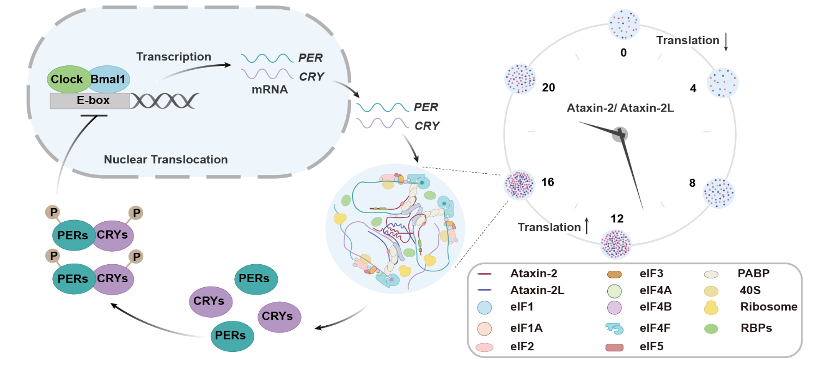Highlights
- ATXN2 and ATXN2L together modulate the mammalian circadian clock
- ATXN2/2L phase-separated condensates oscillate and regulate rhythmic translation
- ATXN2 condensates recruit ribosomes and selective mRNAs for translational activation
- PER2 mRNAs are co-localized and translated within ATXN2 condensates in the SCN
Terrestrial organisms developed circadian rhythms for adaptation to Earth’s quasi-24-h rotation. Achieving precise rhythms requires diurnal oscillation of fundamental biological processes, such as rhythmic shifts in the cellular translational landscape; however, regulatory mechanisms underlying rhythmic translation remain elusive. Here, we identified mammalian ATXN2 and ATXN2L as cooperating master regulators of rhythmic translation, through oscillating phase separation in the suprachiasmatic nucleus along circadian cycles. The spatiotemporal oscillating condensates facilitate sequential initiation of multiple cycling processes, from mRNA processing to protein translation, for selective genes including core clock genes. Depleting ATXN2 or 2L induces opposite alterations to the circadian period, whereas the absence of both disrupts translational activation cycles and weakens circadian rhythmicity in mice. Such cellular defect can be rescued by wild type, but not phase-separation-defective ATXN2. Together, we revealed that oscillating translation is regulated by spatiotemporal condensation of two master regulators to achieve precise circadian rhythm in mammals.

|
Paper Link: https://www.cell.com/cell/fulltext/S0092-8674(23)00599-8
|
